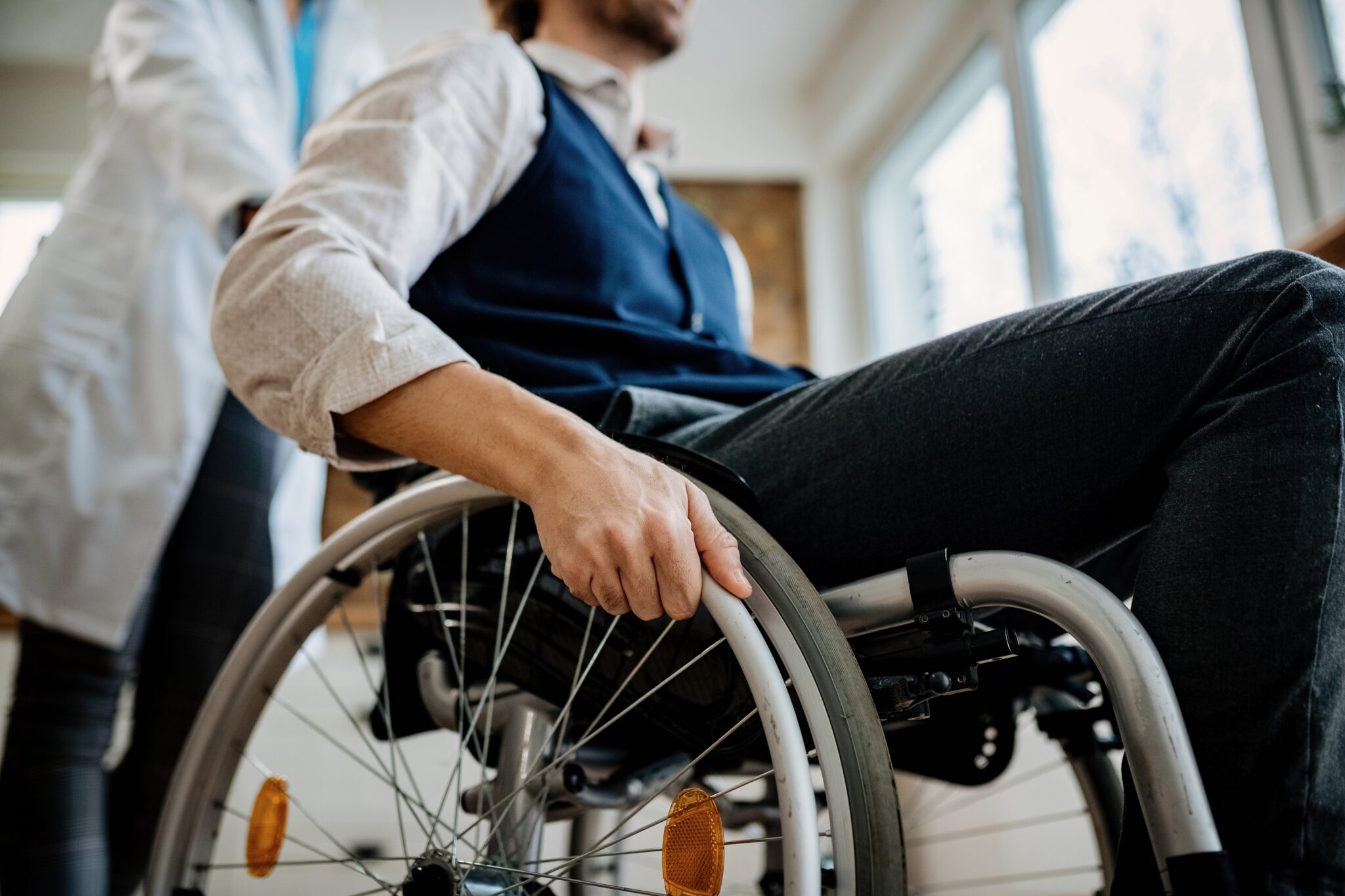
They couldn’t move their legs, not even feel them. Several spinal cord injury patients can now walk again thanks to an implant that electrically stimulates their spinal cords, an advance that could be widespread in the coming years.
This technology has enabled three spinal cord injuries “standing again, walking, cycling and swimming again”summarizes a study published Monday in the journal Nature Medicine.
These three patients, all men, were not only capable of some leg movement, but they also lost sensation after accidents that damaged their spinal cords.
The spinal cord, enclosed by the spinal column, expands the brain and controls many movements. These can therefore be irretrievably lost if contact with the brain is damaged.
But for these three patients, it was possible to change the situation. In Lausanne, a team led by Swiss surgeon Jocelyne Bloch and French neuroscientist Grégoire Courtine implanted fifteen electrodes that allow them to electrically stimulate different parts of their spinal cord.
This is not a first, but rather the culmination of a decade of this type of work with, finally, the prospect of turning it into a therapy that would change the lives of many paralyzed people.
The idea of sending an electrical current to regain lost movement dates back decades and was first put into practice in 2011 when a spinal cord injury was able to stand up again.
Walk a mile
By 2018, several teams, including all those of Ms Bloch and Mr Courtine, had managed to get patients walking again with such technology.
But we could not come up with a concrete application for a long time. It took the affected patients several weeks to repeat a few steps and their progress was limited, with little benefit to their daily lives.
This time, the operated patients were able to take their first steps almost immediately, even if they were put on a treadmill in the lab and had nothing to do with normal walking.
“You shouldn’t imagine an instant miracle (but) it allows you to practice your activities right away”explained Mr Courtine during a press conference.
After five months of rehabilitation, the progress was significant: for example, one of the patients was able to walk almost a kilometer continuously.
To achieve such breakthroughs, the researchers improved the technology used compared to previous experiments.
These were based on pre-existing electrical stimulation instruments. However, these devices are designed for a different purpose: to reduce pain, not to stimulate movement, a much more complex purpose, especially since every human has a spinal cord with highly variable characteristics.
A few hours a day
This time, “the electrodes are longer and larger than the electrodes used previously, allowing access to more muscles”detailed Jocelyne Bloch.
Another important advance, thanks to software that uses artificial intelligence, the electrical impulses are much more accurate: they correspond better to every movement, rather than consist of a random current.
When will these advances benefit the greatest number? thinks Mrs Bloch.
The technology will undergo much larger clinical trials under the auspices of a Dutch startup, Onward. This company wants to make it easy to use with a smartphone, for example to control its triggering.
Because this is one of the limits to keep in mind: once it’s turned off, the electrical stimulation has almost no lasting effect. And it is unthinkable to maintain it permanently, which would exhaust the patient’s organism.
But getting some exercise every day is already a lot, according to one of the patients, Michel Roccati, who had these electrodes implanted in 2020, three years after a serious motorcycle accident.
“I use it every day for a few hours: at work, at home, for a lot of things”he said. “Now it’s part of my everyday life”†
AFP